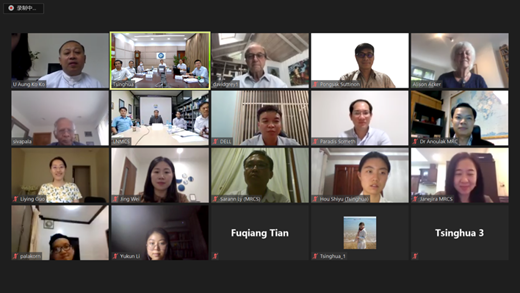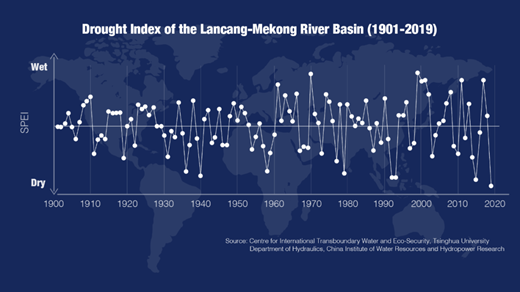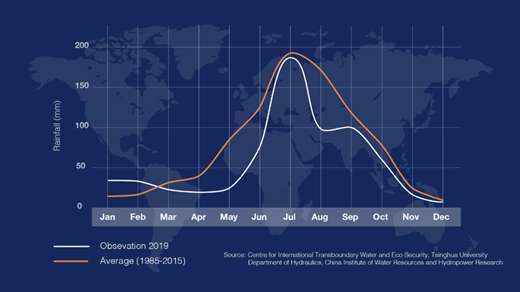An online seminar was held by IWHR on July 15 with representatives from the six Lancang-Mekong countries (China, Cambodia, Laos, Myanmar, Thailand and Vietnam) and other participating states to wrap up the program of Drought Characteristics of Lancang-Mekong River Basin and the Impacts of Reservoir Regulation on Streamflow, a joint-research program with Tsinghua University under the Lancang-Mekong Water Resources Cooperation mechanism, in which China is a core partner.

Patticipants of the online seminar
The research was to unveil the evolution mechanism of water resources in the Lancang-Mekong River Basin, by looking into drought frequency and its spatiotemporal features, and quantifying the natural runoff composition of the mainstream of the Mekong River. The research also investigated the impacts of the Lancang hydropower cascade on water flows in the lower Mekong River.
The research points out an increasing frequency of severe and extreme droughts in the Lancang-Mekong River Basin in the past 120 years and the havoc it wreaked on the Lancang-Mekong countries, both upstream and downstream. The upstream and midstream areas of Lancang River, which are located in China, are hit most by droughts, which usually occur in the basin’s dry season that happens to be the peak period of agricultural water demand.
The year 2019 was one of the driest years over the past 120 years. The center of the severe drought was between the downstream Lancang and the upstream Mekong, due to insufficient rainfall with abnormal monsoon and high temperature and large evaporation caused by El Nino.

Drought Index of the Lancang-Mekong River Basin from 1901 to 2019
The research reveals that the Lancang-Mekong River Basin is currently experiencing a relative high drought frequency.The research also shows that there are more drought events in dry seasons than in wet seasons, which means that cascade reservoirs along the River may generally alleviate droughts by storing floodwater in rainy seasons and recharge water during dry seasons.
Also, rather than only relying on cascade reservoirs, joint dispatching and management of reservoirs on both mainstream and tributaries across the River Basin can be more effective in drought relief in the downstream area.

The observation of rainfall in 2019 in the Lancang-Mekong River Basin and the average monthly precipitation from 1985 to 2015
Based on research findings, it is suggested that Lancang-Mekong countries attach equal importance to both engineering and non-engineering methods to cope with droughts, especially in giving full play to the joint regulation of the reservoirs along the Lancang-Mekong River. The research also advocated further information sharing and research collaboration among the riparian countries, thus bringing Lancang-Mekong Water Resources Cooperation up to a new level.
Experts from around the world highly appreciated the research for elaborating the characteristics of Lancang-Mekong droughts, the overall scenario of the drought in 2019, and the contribution of Lancang cascade reservoirs to ease those stresses. Scientific facts unveiled in the research can help the riparian countries to deepen their mutual understanding and trust and work together to combat drought disasters in the future.








